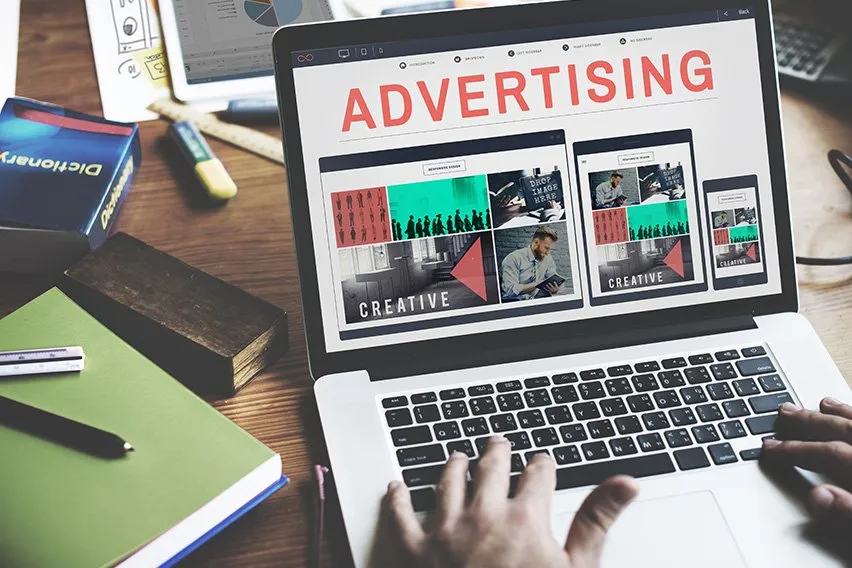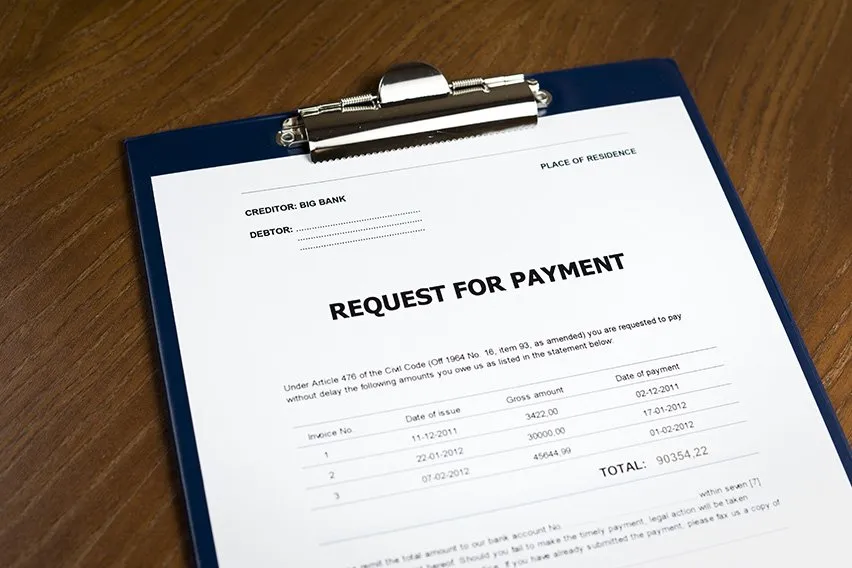7 Types of Advertising to Promote Your Small Business Effectively

Small businesses looking to quickly grow their client base and boost their earnings should invest in advertising to build awareness of their brand among a larger audience. There are a variety of different advertising approaches that your small business can take. You can focus on digital ad platforms, including Facebook, Twitter, LinkedIn, YouTube and Google AdWords. Or, you can choose more traditional advertising mediums, including newspapers, radio and local TV. Investing strategically in advertising for your small business can result in a high return on investment, bringing valuable new business to your company.
These topics will help you become an expert on the types of advertising for small business:
7 Types of Advertising for Small Business
5 Advertising Tips for Small Business
7 Types of Advertising for Small Business
Small businesses looking to grow their revenue through advertising need to be sure to choose types of advertising that fit their budget and make sense for their business model. Here are some of the best types of advertising used by small businesses to promote a product, service or content:

1. Social Media Advertising
Social media advertising is a popular choice for small businesses, because the cost is relatively affordable and you can be highly selective with the audience you target. For example, if you own a retail store, you can use ad targeting options to narrow the audience so that only people of a certain demographic living within a certain mile radius of your store are served your social ads. There are a few different social media platforms you can select from for social advertising, including:
- Facebook: Facebook is a great advertising choice for most small businesses, because of the widespread adoption of the platform and the relatively low cost of their ads. Almost 70 percent of American adults use Facebook, and among those who use it, nearly 75 percent log in to the service at least once per day. There are different ad units to choose from on Facebook, including video ads, customer offers, carousel images, lead generation, page likes, event responses and more. You can learn more about Facebook advertising on the Facebook Business site.
- Instagram: Instagram ads are a great option for small businesses with a highly visual brand that appeals to younger audiences, since 60 percent of Instagram’s one-billion users are under the age of 30. Instagram includes many of the same targeting parameters offered by Facebook and their ad units include image ads, video ads, Stories ads and carousel ads. You can also include clear call-to-action buttons to drive traffic to your website.
- LinkedIn:LinkedIn advertising tends to be a bit more expensive compared to other social networks, but it’s a great option for small businesses with a business-to-business (B2B) sales model, since you can target professionals in specific industries and with certain job titles through LinkedIn ads. There are more than 560 active professional users on LinkedIn.
2. Pay-Per-Click Advertising
Pay-per-click (PPC) advertising is a type of online advertising where advertisers pay a fee every time a user clicks on one of their ads, usually through a search engine. Advertisers bid on ad placements within the search engine, meaning they set a maximum price they’re willing to pay for a user to click on their ads. If a person sees your ad but doesn’t click on it, you aren’t charged anything. The most common platforms for PPC advertising are Google Ads and Bing Ads. PPC advertising is a form of search engine marketing (SEM). It can be a great option for small businesses with limited budgets and according to WordStream, businesses make $2 in revenue on average for every $1 they spend on Google Ads.
3. Mobile Advertising
Mobile advertising is a type of digital advertising in which ads are served only on mobile devices, including smartphones and tablets. Mobile advertising can include:
- Mobile display ads
- Mobile search ads
- Mobile videos
- Mobile app ads, which are meant to drive downloads of a brand’s app
- Social media ads served on mobile devices only
Having a mobile advertising strategy can pay off for your small business. Eighty-four percent of adult customers under the age of 30 are most likely to shop online using a mobile device.
4. Print Advertising
Print advertising used to be the primary advertising method for small businesses before the advent of digital advertising. Now, print ad revenues are shrinking and as a small business owner you may find the cost is much higher than the cost of digital and social advertising. It’s also more difficult to measure the success of your print advertising campaigns, since it’s almost impossible to prove how many people who saw your ads in print went on to make a purchase at your store or become a client of your business. But, for some local businesses or businesses that target older, less digitally engaged audiences, print advertising can still be a good choice for your ad spend. Print advertising includes newspaper ads, magazine ads and ads in brochures and flyers.
5. Broadcast Advertising
Broadcast advertising includes mass-market media like TV and radio. While broadcast advertising, especially TV ads, can be cost prohibitive for small businesses, if you have local TV and radio stations near you, the cost might be more affordable and the audience could be highly relevant to your local business. The cost of broadcast ads depends on a number of factors, including the length of the ads (longer TV and radio ads will cost more to air), the frequency they play and the time of day they’re aired. You’ll also need to factor in the cost of producing the ads, since professional TV ads can be quite expensive to produce.
6. Out-of-Home Advertising
Out-of-home or outdoor advertising refers to any advertising that reaches people when they’re outside of their homes. This includes billboard ads, digital signage, transit ads (i.e. bus shelters, train ads, subway stop ads, etc.), street furniture ads and ads in sports venues. Out-of-home advertising can be quite expensive, so be sure it fits with your advertising budget.
7. Direct Mail Advertising
Direct mail advertising involves all forms of ads that are delivered to a person’s home through the mail. This includes, brochures, catalogues, sales letters and newsletters. While direct mail is a less popular advertising method for small business than digital advertising, it can be successful if you develop a creative, visually appealing direct mail campaign. Direct mail ads enable you to deliver your message one-on-one to local consumers.

5 Advertising Tips for Small Business
1. Target the Right Audience
One of the best ways to maximize your budget and spend your ad dollars efficiently is to ensure you’re reaching your business’s target audience. To do this, first make a profile of your target customer. You can survey your existing customer base, or refer to demographic information you’ve already gathered about your audience, including details included in mailing list sign-ups. Once you have a demographic profile of your target customer, choose advertising platforms that make sense for that audience and your location.
2. Advertise Where Your Audience Is
Now that you understand who your target market is, do your research on the various ad platforms available to make sure your advertisement will reach your target customer. For example, if your target consumer is under 21 years old, mobile advertising through Snapchat might be a great choice. If you’re considering print, broadcast or outdoor advertising, request a media kit before purchasing ad space to make sure the demographics make sense for your targeting.
3. Track and Measure Success
It’s important that you evaluate the performance of your advertising campaign so that you can make informed decisions about future ad decisions. Digital ads make it easy to track the success of your efforts; social and PPC ad platforms give you detailed reports on how much you spend, how efficiently you spend your budget, the best-performing ad creative, and the demographics of the people who engage with your ads. You can get a sense of how many people click on your digital ads and what percentage of those people go on to make a purchase or take another desired action on your business website. It’s important to ensure when people make a purchase that you back all your hosted content with a CDN to ensure your content is delivered more quickly. With broadcast and outdoor advertising, it can be more difficult to measure success. Consider using a unique URL, email address, or phone number in those ads, so you can see how much interest they generate. Or, include an offer code that can be used for a discount on your website. If you use a unique code for each ad you create, you’ll be able to compare the success of all your advertisements.
4. Get the Timing Right
If you don’t have the budget to advertise all year long, it’s best to run your ad campaigns during the most effective times of the year. Study your business earnings and identify your busiest seasons. Maybe, if you’re a retail business, your peak season is during the December holidays. Or, if you run a landscaping business, you’re probably busiest during spring and summer. Advertising during the time of year when people are most likely to pay for your products and services can increase your return on investment.
5. Try Remarketing Strategies
Remarketing is relevant for most forms of digital advertising. It involves targeting your ads at people who have visited your website before but haven’t converted to paying customers. You can create highly personalized ads to engage with these users, based on what they previously viewed on your website. These ads will then be more relevant to the customer and with engaging copy or a discount offer, you can hopefully convince the person to convert.
Did you find this article helpful? If so, check out our article on How to Advertise a Small Business. In it, we explain various methods to advertise your business, including free ways to promote it.
RELATED ARTICLES

 The Difference Between Marketing and Advertising: Why Your Small Business Needs Both
The Difference Between Marketing and Advertising: Why Your Small Business Needs Both How to Fill out an Invoice | Professional Invoicing Checklist
How to Fill out an Invoice | Professional Invoicing Checklist Invoice Wording: How to Word an Invoice For Your Business
Invoice Wording: How to Word an Invoice For Your Business What Does an Invoice Look Like: Everything You Need to Know
What Does an Invoice Look Like: Everything You Need to Know How to Ask for Payment Professionally: With Templates and Examples
How to Ask for Payment Professionally: With Templates and Examples